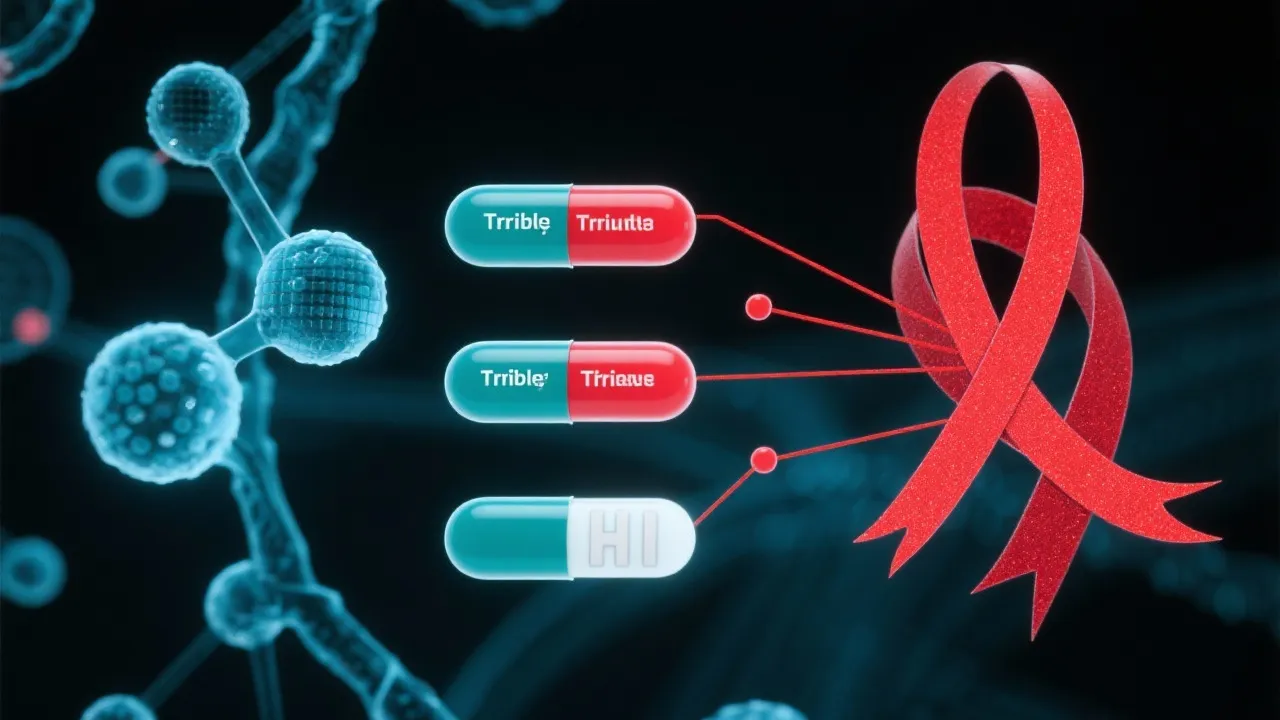Modern Triple Therapy HIV treatment remains a pivotal advancement in the management of HIV/AIDS. This method combines three antiretroviral drugs to suppress the virus effectively, enhance patient outcomes, and improve quality of life. Its efficacy, ease of adherence, and impact on prolonging lives have made it a standard in therapeutic protocols.

Modern Triple Therapy, commonly known as Highly Active Antiretroviral Therapy (HAART), has revolutionized the treatment landscape for HIV/AIDS. It combines three or more antiretroviral drugs to effectively manage and suppress the Human Immunodeficiency Virus (HIV). Over the years, this approach has significantly reduced morbidity and mortality rates and transformed HIV/AIDS from a fatal condition into a manageable chronic illness. As our understanding of HIV biology has evolved along with advances in pharmaceutical sciences, the implementation of HAART has become critical in combating the epidemic and enhancing the quality of life for those living with HIV. This form of therapy not only addresses the virus itself but also supports overall health and well-being.
The typical regimen includes a combination of drugs from at least two different classes, such as:
By combining drugs that target the virus at different stages of its life cycle, Modern Triple Therapy maximizes viral suppression and minimizes the risk of resistance. The strategic use of different drug classes helps in addressing the problem of viral mutation and resistance, a significant challenge in HIV treatment.
This approach has yielded impressive outcomes, such as:
Moreover, the availability of single-pill combinations has improved adherence, an essential factor in the effectiveness of antiretroviral therapy. Simplifying medication regimens to once-daily dosing enhances the likelihood of adherence, thereby maximizing therapeutic outcomes. These advancements are complemented by ongoing educational efforts in the healthcare system, which aim to empower patients with knowledge about their treatments.
Global access to Modern Triple Therapy HIV formulations has significantly increased due to efforts by healthcare organizations worldwide, aiming to universalize treatment availability. Initiatives such as the Global Fund and PEPFAR (President's Emergency Plan for AIDS Relief) have fostered improved accessibility to treatment in low-resource settings. Despite disparities in regional healthcare infrastructures, initiatives are underway to ensure comprehensive accessibility. For many, the therapy’s success epitomizes a joint victory in global public health efforts.
Challenges remain, particularly concerning the affordability of medications in resource-limited settings. Generic medications have eased some of these economic barriers, but ongoing advocacy is essential to ensure that new therapeutic options become accessible across all demographics. Furthermore, the stigma associated with HIV in many regions continues to hinder people from seeking necessary treatment. Global partnerships, awareness campaigns, and community-based interventions are vital in addressing these barriers, fostering a supportive environment for testing and treatment.
The advent of Modern Triple Therapy in HIV treatment underscores the importance of innovation and collaboration in medical science. While challenges persist, ongoing research and global cooperation hold promise for further advancements, as the medical community continues to strive towards an HIV-affordable future. As we look to the future, continuous investment in HIV research, treatments, and services is critical to achieving sustainable progress in the fight against this global epidemic. With collective efforts from healthcare professionals, policymakers, communities, and individuals, a world without HIV can be imagined, where everyone has equitable access to care, and where HIV is no longer a barrier to leading healthy, fulfilling lives.
Reflecting on the journey of HIV treatment and the evolution of Modern Triple Therapy, it is essential to contemplate future directions in HIV care. Researchers are actively exploring many emerging therapeutic strategies, alternative drug formulations, and innovative delivery methods. The introduction of new antiretroviral classes holds potential for patients with treatment-resistant strains of HIV, as well as for those who experience side effects from standard therapies. One such class—integrase inhibitors—has demonstrated excellent efficacy and tolerability profiles, becoming first-line therapy in many treatment guidelines worldwide.
Moreover, the rise of personalized medicine plays a critical role in the future landscape of HIV management. Genetic and biomarker research may inform treatment choices tailored to individual patient profiles, improving outcomes significantly. Collaborations between pharmaceutical companies, academic institutions, and community organizations can inspire innovative approaches to clinical trial designs that prioritize inclusive participant recruitment, ensuring that treatments developed are safe and effective for diverse populations.
Additionally, there is growing recognition of the importance of mental health care in the comprehensive treatment of HIV. Counseling support, mental health evaluations, and integrated care models incorporating psychological services are gaining traction. Addressing stigma, both social and self-imposed, remains central to improving the overall wellbeing and adherence of individuals living with HIV.
Lastly, integrating HIV services into primary healthcare systems stands as a crucial objective. This model not only increases accessibility but also strengthens the continuity of care. As community-based care expands, individuals can access necessary services without the stigma often associated with specialized HIV clinics, creating an environment conducive to treatment uptake and retention.
In conclusion, the narrative of HIV treatment continues to unfold, with Modern Triple Therapy as a cornerstone. The interconnectedness of medical innovation, social awareness, and global collaboration shapes the ongoing response to this public health challenge. By fostering a holistic approach, embracing technological advances, and nurturing compassionate care, the hope for a world where HIV is managed effectively is firmly within sight.
Explore the Tranquil Bliss of Idyllic Rural Retreats

Ultimate Countdown: The 20 Very Legendary Gaming Consoles Ever!

Affordable Full Mouth Dental Implants Near You

Discovering Springdale Estates

Embark on Effortless Adventures: Unveiling the Top in Adventures Made Easy Outdoor Equipment

Unlock the Full Potential of Your RAM 1500: Master the Art of Efficient Towing!

Dodge Ram: Redefining the Future of Full-Size Trucks with Unmatched Power and Innovation

Get New Phones Without Plans Easily

Smart Strategies to Slash Costs on Your Roof Replacement Endeavor
